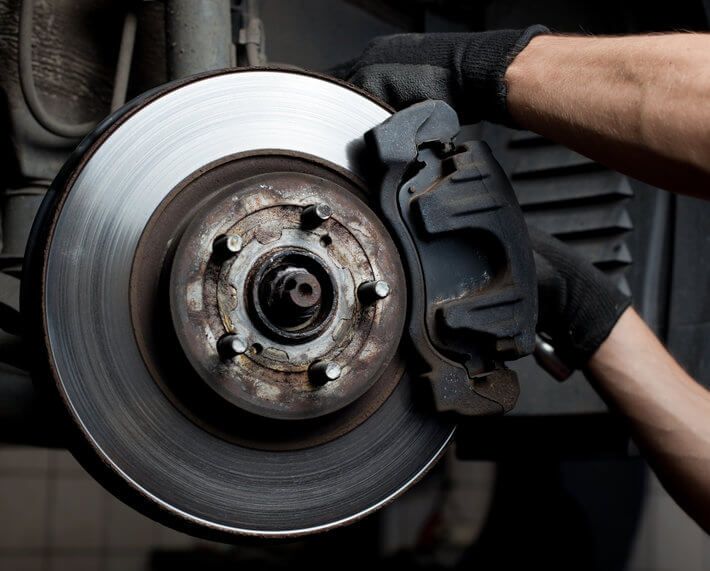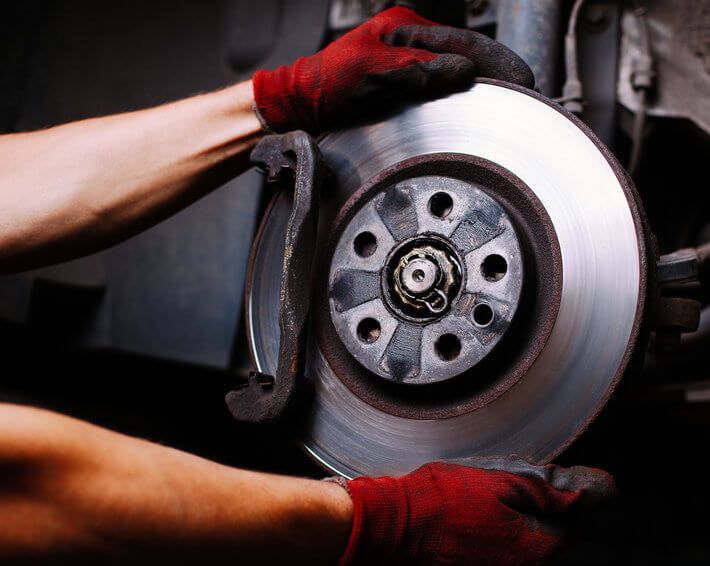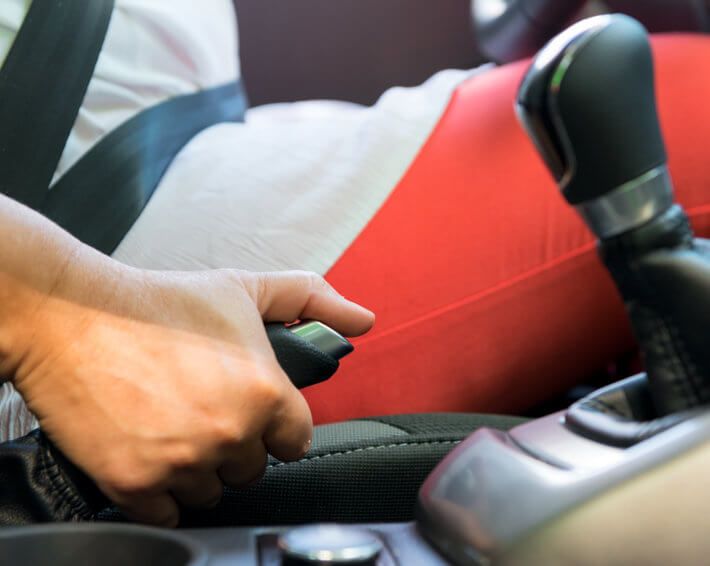Thankfully, Fred Flintstone-style brakes are a thing of the past! If they weren't, can you imagine how red lights and stop-and-go traffic would wear out the pads of your feet? Nowadays, a light press on the brake pedal can slow your vehicle to a complete stop, all thanks to the complexities of your braking system. Like other parts of your car that go to work every day, your brakes are prone to wear out over time—especially your brake pads. Learn more about your car's brake pads so you can stay in-tune with their care and maintenance, plus head-off any brake problems before your brakes decide to "take a break!"
When were brake pads first invented?
Up until the 1890s, most cars relied on a wooden block to brake. The driver pushed a lever that in turn, rubbed the block against the wheels, creating friction and stopping the vehicle. As cars started going faster (above 10-20 mph) and wheels became more complex, the wooden block ceased being the most efficient braking method. In 1898, inventor Elmer Ambrose Sperry designed the first solution: a car equipped with front-wheel disc brakes and brake pads that "pinched" the rotor or disc, working much like bicycle brakes.
How do modern day brake pads work?
Simply put, brake pads contact your rotors and cause friction to slow and stop your car. Brake pads are part of a very interconnected system, a system that relies on each of its parts to function safely and successfully. Here's how your brake pads play their part:
- When you press down on the brake pedal, you activate a cylinder that sends brake fluid through hoses, down to the calipers.
- The calipers engage your brake pads.
- Your brake pads apply pressure to the rotor, which is directly connected to each wheel.
- This pressure creates the friction needed to slow or stop your vehicle. When the rotor slows, so do your wheels.
- Take your foot off the brake pedal and the whole process reverses: the brake pads release, fluid moves back up the hoses, and your wheels are on the move again!
Psst! You can learn more about braking parts and processes in Everything You Need to Know About Brakes.
Are there brake pad problems I should watch out for?
Certain sounds and sensations can all signal potential brake pad problems. Stay alert and pay attention to:
- Screaming or grinding: Any noise that could be labeled as "eardrum piercing" could mean it's time to have your brake pads inspected. Worn pads could cause damage to other parts of the system and lead to major and often more expensive repairs.
- Shaking in your steering wheel or brake pedal: When worn brake pads turn into worn out brake pads, it can lead to rotor damage from all the metal-on-metal rubbing. Shivers and shakes in the steering wheel or brake pedal are more than just unpleasant. Your brake system is trying to communicate with you!
- Brake warning light: This dashboard indicator light could come on for several reasons, none of which you want to ignore. The light could be clueing you into a problem with the brake's hydraulic system, your brake fluid level could be low, or your parking brake may be engaged. Whatever the reason for the light, your ability to safely come to a stop isn't worth risking.
How often should my brake pads be inspected?
General wisdom says to have your brakes (including your brake pads) inspected every 5 months or 5,000 miles, but your manufacturer guidelines may give you better guidance for your specific vehicle. If you're hearing grinding, squeaking, or squealing, your steering wheel feels shaky, or your brake warning light is on, visit your nearest Firestone Complete Auto Care today. During a free brake inspection, we'll measure your brake pad wear, check brake fluid levels, and let you know if your brakes need further service. Our technicians are ready to answer your brake questions and give you a better idea of how much "life" is left in your car's brake pads. If you're ready to stop wondering what's troubling your brakes, visit your local Firestone Complete Auto Care or schedule an appointment online for a free brake inspection today.


